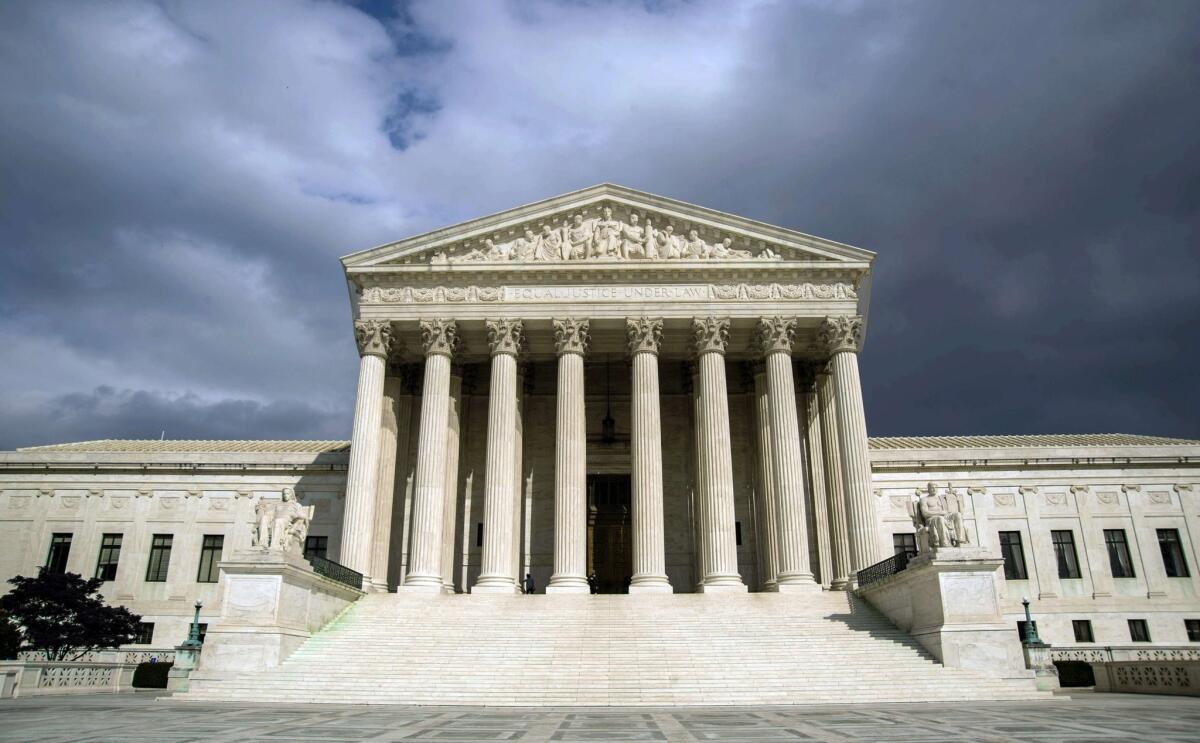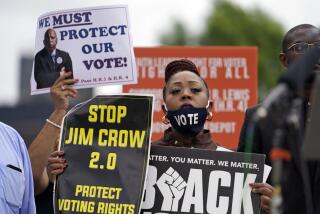Supreme Court skeptical over racial gerrymandering claim from Alabama

The Supreme Court gave a mostly skeptical hearing Wednesday to black Democrats from Alabama who complained of racial gerrymandering by white Republicans who moved more blacks into districts which already had black majorities.
They used “rigid racial quotas” to “pack” these black voters into some districts while strengthening the GOP’s grip on political power, said law professor Richard Pildes, representing the Alabama Legislative Black Caucus.
But he ran into sharp questions from the court’s conservatives who said Alabama’s lawmakers were simply following the rules set by the Justice Department in the 1990s.
Back then, federal officials, citing the Voting Rights Act, pressed Southern states to draw election districts so that some of them would have black majorities. The aim was to elect new black representatives to Congress and the state legislatures.
That strategy succeeded, at least in its initial aim. In Alabama, about one-fourth of the voters are black, and about one-fourth of the lawmakers in its Legislature are black.
Now, civil rights advocates and black lawmakers are arguing that Republican-controlled legislatures are going too far and concentrating ever more blacks in districts that already have black representatives.
Justice Antonin Scalia had opposed the drawing of the districts based on race in the 1990s, and he quickly attacked when the attorney for the black lawmakers faulted the Republicans for using race to move around voters. “You are making the argument the opponents used to make here,” he said.
Chief Justice John G. Roberts Jr. said that if black Democrats were to prevail, legislatures would have to “navigate” between using race “too much or too little” in drawing the district lines.
Pressing the same point, Justice Samuel A. Alito Jr. said the black Democrats are not opposed to all racial quotas. “You are interested in lower quotas,” he said. For example, by this logic, a district with 65% black voters may be too high, but 55% might be acceptable, he suggested.
The Alabama case came before the high court a week after some of the South’s last white Democrats went down to defeat. It opens a new phase in the the long-running dispute over when, if ever, lawmakers may draw district lines based on the race of the voters.
Several of the court’s liberal justices said the case should be sent back to Alabama to have judges take a closer look at a few districts where more blacks were concentrated.
But Alabama’s Solicitor General Andrew Brasher said the racial gerrymandering complaint should be rejected and the case ended. “This was a status quo plan,” he said, since the state maintains the same number of black-majority districts as it did previously.
The case of Alabama Legislative Black Caucus vs. Alabama has been closely watched, because it is the first to come before the court since part of the Voting Rights Act was struck down. It also gives the justices a new chance to explain when lawmakers may consider race in drawing district lines.
But the back-and-forth argument suggested the justices may try to rule narrowly.
On Twitter: @DavidGSavage
More to Read
Sign up for Essential California
The most important California stories and recommendations in your inbox every morning.
You may occasionally receive promotional content from the Los Angeles Times.











